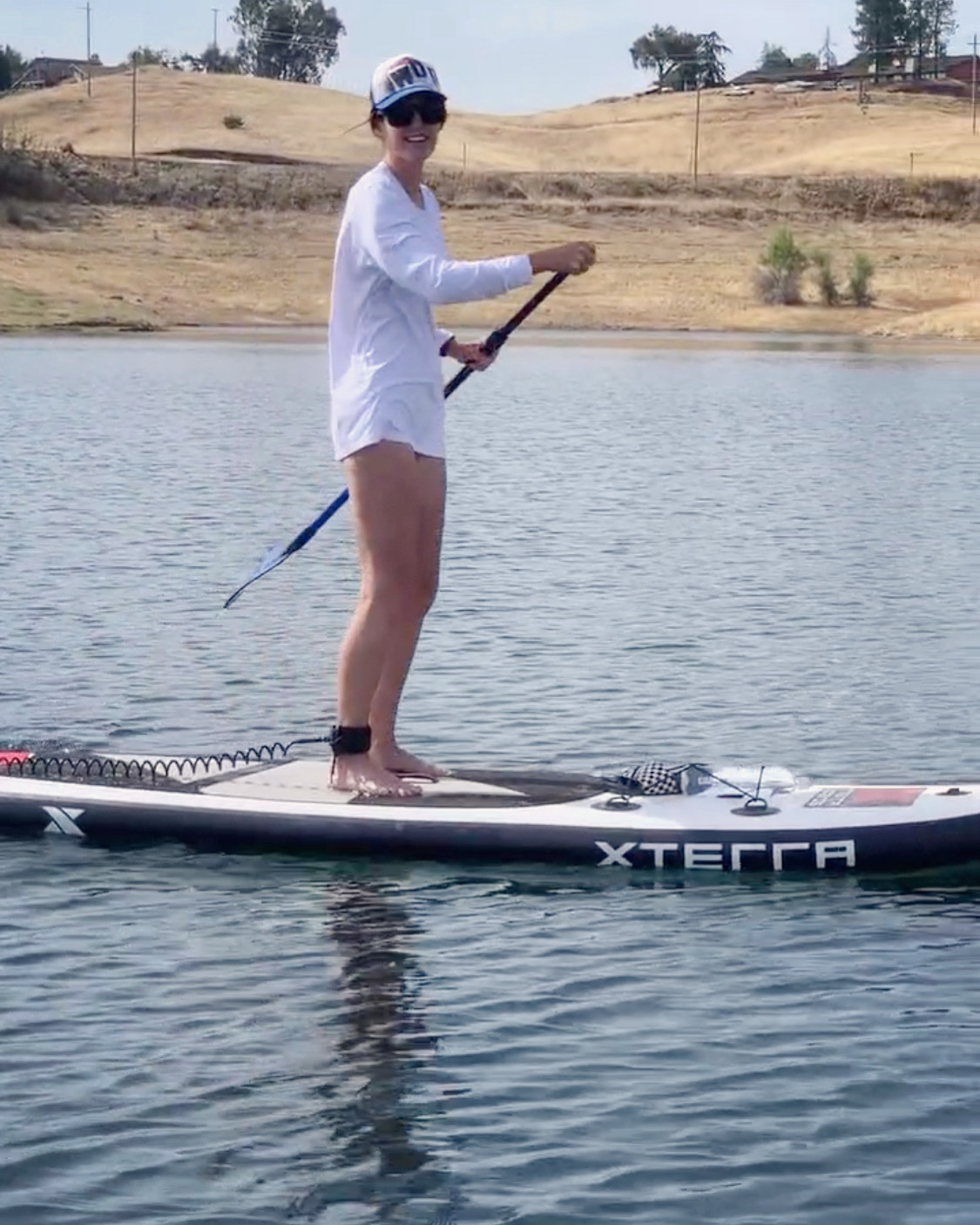I would have probably scoffed if someone had told me a few years ago that surviving cancer would redefine my fitness journey. But here I am, at 48, 19 months cancer-free, and I’ve never felt healthier or more balanced. Surviving a 5 cm tumor in my colon was a wake-up call, a new beginning, and it’s made me reconsider what proper fitness means.
Surviving cancer is like being born again. It gives you a new perspective on life, a chance to reset and take stock of the things that truly matter. For me, it wasn’t just about beating colon cancer but also about discovering my healthiest version.
Cardio, Cardio, and More Cardio
Before that fateful diagnosis in July 2021, you’d find me clocking in miles on the treadmill, leaping in aerobics classes, or sweating it out in grueling HIIT sessions. Rest days? Not in my vocabulary. I used to think pushing myself to the limits was the key to staying fit. But let’s be honest: beating cancer changes you in every possible way.
The Battle and The New Beginning
After surviving a tumor that cost me half my colon, I realized I needed to revamp my approach to fitness and nutrition. The entire right side of my colon had to be removed, and I underwent chemotherapy treatments. The last chemo session was on January 26, 2022. I then took a couple of months off to recover physically and emotionally. I felt like a blank canvas, ready to be repainted.
My body was like an overworked machine, craving some serious TLC. We’re talking about weight loss that brought me down to a size I hadn’t seen since my twenties, muscles so depleted you could mistake my arms for spaghetti strands, and hormonal swings that made me feel like a walking chemistry experiment.
Slow and Steady Rebuild
Instead of diving back into my old “go hard or go home” fitness routine, I did something I had never done before: I started listening to my body. Every morning, rain or shine, my dog and I are out the door for a calming yet invigorating 2-mile walk. These walks aren’t just about burning calories; they’re my time to meditate, breathe, and tune in to how my body is feeling.
Finding Strength, A New Approach to Fitness
Three times a week, I’m back to working out. But I’m lifting weights instead of running like there’s no tomorrow. I’m talking squats that make me feel the burn from my glutes to my toes, lunges that challenge my balance and flexibility, and deadlifts that give me the back strength I didn’t know I was missing. Bicep curls and shoulder presses round out the routine. Every 4-5 weeks, I add a new twist—think resistance bands or kettlebells—to keep things exciting and my muscles guessing.
The Art of Pacing
Strength training isn’t just about lifting weights but pacing yourself. I used to be someone who would power through a workout, moving from one exercise to another as if on a timer. Not anymore. I give myself enough rest between sets, roughly 60 to 90 seconds, to allow my muscles to recover. This way, I can put maximum effort into the next set without risking injury.
Mind-Muscle Connection
Have you ever heard of the mind-muscle connection? If not, let me introduce you to your new best friend. It’s focusing intently on the muscle you’re working on during each rep. When doing bicep curls, my mind is solely on my biceps, visualizing them contracting and expanding. This might sound a little woo-woo, but trust me, it’s a game-changer.
Smart Cardio
I still have a soft spot for cardio, but now it’s a treat, not a daily grind. Once or twice a week, I go for a 20-minute HIIT session or a 2-mile run. It’s exhilarating, but it’s not my whole life. And for the first time, I’ve embraced the art of resting. I’m talking two full days off each week, sometimes more, and let me tell you, it feels good—really good.
Quality Over Quantity
I’ve reduced the amount of cardio, but that doesn’t mean it’s any less effective. These days, when I do go for a run or engage in a HIIT session, it’s all about quality over quantity. Instead of zoning out, I’m fully present, pushing myself at intervals and giving myself time to recover. This ensures that I get the most bang for my buck quickly, preventing unnecessary strain on my body.
What Rest Days Are Truly About
Ah, the once-feared rest days. These are not just days off from working out; they are days when I actively recover. I’ll do some light stretching or yoga and focus more on how my body feels. In this new approach to fitness, I still walk every day and aim for at least 8,000 steps. Rest days are when I listen to my body the most. How are my muscles feeling? Are my joints aching? This way, I can tailor my upcoming week’s workouts based on what my body tells me.
Deepening My Relationship with Rest
Rest days aren’t just about physical rest; they’re about mental rest, too. There’s something liberating about not planning my day around a workout. It’s a mental break, a chance to focus on other things that make me happy. Whether reading a book, watching a movie, or spending quality time with loved ones, these activities contribute to my overall sense of well-being, positively impacting my fitness journey.
How My Body Speaks to Me
One of the most empowering aspects of my new fitness approach is learning how my body communicates with me. If I wake up feeling stiff or sore, that’s my cue to take it easy and maybe do some light stretching or yoga instead of working out. On days I feel full of energy, I might throw in an extra strength training session or extend my walk by a few extra miles. The key is to remain flexible and responsive to what my body is signaling.
The Surprising Benefits: Beyond Just Physical
The physical gains are significant—I’m talking more muscle, better flexibility, and improved endurance. But the benefits go far beyond that. My sleep quality has improved, and my stress levels have noticeably dropped. I even find myself more focused and productive in my day-to-day tasks. These are changes I hadn’t expected but warmly welcome.
The Blessing in Disguise: Minimized Menopausal Symptoms
Here’s the real kicker. Since starting this new balanced routine, my menopausal symptoms have dialed down. Hot flashes? Way less frequent. Mood swings? It’s a lot more manageable. The combo of strength training, controlled cardio, and active rest is doing wonders here.
The Power of Listening to Your Body
So, what’s the big lesson here? It’s simple: listen to your body. My post-cancer and post-menopausal body needed a workout regimen that wasn’t just a ‘regimen’ but a dialogue between my mind and body. No more robotic cardio sessions or draining my energy tank dry. Now it’s about balance, about tuning in to my body’s needs and adjusting accordingly. At 48, I learned that fitness isn’t a sprint but a lifelong marathon. And I’ve never felt better.
I’ve learned that my fitness journey isn’t about punishing my body; it’s about enriching it. I’ve become physically, mentally, and emotionally resilient by listening to my body’s cues, scaling my workouts accordingly, and giving myself the rest I deserve.
And if I’ve learned one thing from my battle with cancer, resilience is everything. So, to anyone going through their struggles, be it health or otherwise, remember this: Your body is an incredible machine, but it also deserves your respect and kindness. Tune in, listen, and you might be surprised at just how transformative a new approach to fitness can be.



